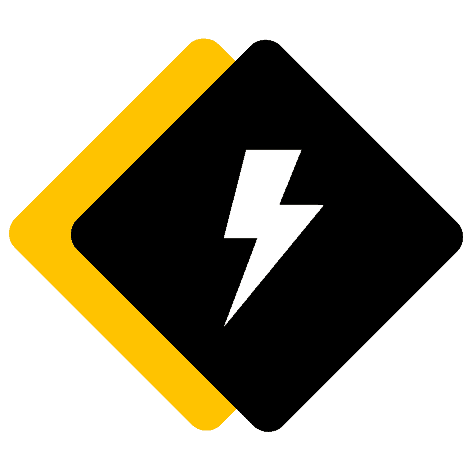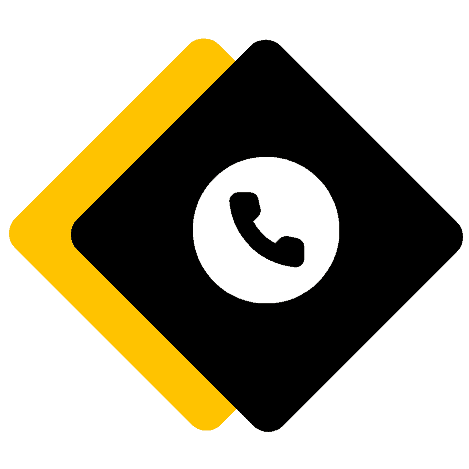Here at Luno Electrical, we love bright ideas — but we know too much blue light can turn your relaxing evenings into a midnight staring contest with the ceiling. If you’ve ever asked, “Is my LED light turning me into a raccoon-eyed zombie?” — you’re not alone. Grab a cuppa, sit under a nice warm-white lamp, and let’s break it down (with a few dad jokes, naturally).
What is Blue Light and Why is it Harmful?
Blue light is a short-wavelength, high-energy light that’s part of the visible spectrum. It’s naturally found in sunlight (which is great by day) and artificially in LED lights, screens, and fluorescent bulbs (not always so great at night).
Why harmful? Because at night, blue light can mess with your circadian rhythm (your body clock), suppress melatonin (your sleepy-time hormone), and keep your brain shouting, “Stay awake!” long after you’d rather be dreaming of a holiday in Fiji.
What Does Blue Light Do for Your Body?
In small doses — especially during the day — blue light actually perks you up. It boosts alertness, helps memory, and fights off drowsiness at your 3pm work slump. But too much blue light exposure at the wrong time confuses your body clock. Think of it as telling your body it’s midday at midnight — your brain says “party time” while your body says “mate, I just want to sleep.”
What Does Blue Light Do to Sleep?
Blue light suppresses melatonin production — this means your body struggles to get into snooze mode. Exposure at night can delay falling asleep, reduce sleep quality, and leave you feeling foggy the next day. And trust us, no one wants to see you grumpy at the Monday morning meeting (your boss included).
Why Do My Neighbours Have a Blue Light On?
Good question. Not all blue lights are bad — some people use blue porch lights for special reasons, like supporting autism awareness or police appreciation campaigns. Or maybe they just like to confuse the possums. Inside the house though? Not so smart after sunset.
Can Blue Light Cause Headaches?
Yep. Many people experience digital eye strain and tension headaches from prolonged blue light exposure — think screens and harsh white LEDs. If you’ve ever felt your eyeballs shrivel after eight hours on Zoom, you know the pain.
Do Sunglasses Block Blue Light?
Standard sunnies? Nope — they’re designed mainly for UV rays. You’ll need blue light blocking glasses or special lens coatings for serious blue light filtering. Or, better yet, fix the problem at the source with smart lighting — more on that in a sec.
What Are the Symptoms of Blue Light Exposure?
Trouble falling asleep
Waking up groggy
Headaches and eye strain
Dry, irritated eyes
A sudden dislike for your laptop (join the club)
What is the 20-20-20 Rule for Eyes?
This gem is for all screen warriors: Every 20 minutes, look at something 20 feet away for 20 seconds. It helps relax your eye muscles and reduce strain. Bonus tip: stand up and stretch too — your back will thank you.
Is Blue LED Light Bad for Your Eyes?
In large amounts over long periods? Possibly. Excess blue light can contribute to retinal stress and may play a role in age-related eye conditions. It also ramps up glare and discomfort. So while LED lighting is energy efficient, choosing the right kind (like warm-white or filtered options) keeps your peepers happy.
What Does Blue Light Mean in Mental Health?
It’s a mixed bag. Daytime blue light boosts mood and alertness — so it’s handy if you’re stuck in a windowless office. But at night, too much can make you anxious, wired, and disturb your sleep, which then messes with mental wellbeing. Basically, blue light is your mate in daylight, your enemy after dark.
Lighting Choices: How to Beat the Blue
Good news: you don’t have to live in darkness or move to a cave to tame your blue light exposure. Here’s how to make your home or workplace healthier — and snooze-friendlier — without sacrificing style or convenience:
✅ Switch to Warm White Bulbs
Modern LEDs come in every shade under the sun, but standard “cool white” or “daylight” bulbs often pump out a strong spike of blue light — exactly what you don’t want before bed. Swapping these for warm-white or soft-white bulbs (look for around 2700K colour temperature) recreates that cosy, golden glow we loved about old incandescent bulbs. Warm-white is perfect for living rooms, bedrooms, and anywhere you want to chill at night. It’s like giving your home a built-in sunset — minus the awkward need to post it on Instagram.
✅ Install Blue-Light-Filtered Downlights
If you’re serious about your shut-eye, consider purpose-built downlights with blue light filtering or amber LEDs. These special lights produce a gentle, candle-like glow that doesn’t mess with your melatonin. We have options that are popular with people who want to protect sleep quality — and are ideal for bedrooms, kids’ rooms, or reading corners. Luno can help you pick and install the right ones, so you can drift off naturally without counting sheep (or ceiling cobwebs).
✅ Use Tuneable or Circadian Lights
Why settle for one setting when you can have sunrise, daylight, and sunset on command? Tuneable or circadian lighting systems let you adjust colour temperature and brightness to follow your natural rhythm. These clever LEDs boost energy with crisp white light during the day and shift to soft amber tones at night to help you wind down. Many are smartphone-controlled or use a standard switch — no PhD required. It’s like nature’s cycle, but with a remote control. Handy!
✅ Add Dimmers and Smart Controls
One of the easiest and budget-friendly tricks? Install dimmers. Dimming lights in the evening lowers overall brightness and cuts blue light intensity, giving your body the right bedtime signals. Combine dimmers with smart switches or app controls so your lights automatically soften as bedtime nears — zero fuss, maximum sleep benefits. Bonus: dimmed lighting makes every dinner feel fancier. Just watch the garlic bread — romantic meals can’t save burnt toast.
✅ Use Night Lights Strategically
Need to wander at 2am? Avoid shocking your eyes with bright ceiling lights. Place low-blue or red-toned night lights in hallways, bathrooms, or the kids’ room. They offer just enough gentle glow to help you avoid LEGO landmines without blasting away your sleepiness. Motion-sensor options are perfect — they turn on only when needed and protect your precious melatonin. Future you, stumbling to the fridge, will be forever grateful.
People Also Search For…
Let’s hit a few quick answers:
Blue Light Screen: Most screens (phones, tablets, monitors) pump out blue light. Use night mode or blue light filters if you’re up late.
Blue Light Glasses: Helpful for heavy screen time. They filter blue wavelengths and ease eye strain — but don’t rely on them alone; good lighting still matters.
Blue Light Torch: Some torches use blue light for night fishing or hunting — not exactly for bedtime stories!
Blue Light Movie & Beer: No health advice here — unless you plan to watch a movie about blue light while drinking a beer under harsh blue LEDs. We don’t recommend it.
How Luno Electrical Can Help
Look, managing blue light shouldn’t keep you up at night. We’re here to do the hard work for you. As a trusted, registered Master Electrician with over 160 glowing (pun intended) 5-star Google reviews, Luno can:
✨ Recommend the best warm-white, blue-light-friendly bulbs
✨ Install blue-blocking downlights or tunable circadian lighting
✨ Add smart dimmers and controls so your lights do the thinking for you
✨ Make your home or office lighting healthier, cosier, and more sleep-friendly.
Plus, we clean up after ourselves — so no wires left lying around to trip you at 2am.
Final Dad Joke
Before you go swap your bulbs — here’s one last dad joke:
Why did the electrician sleep so well?
He had the best light switch-off routine in town.
Ready to Banish the Blue?
Let’s chat! Whether you’re building a new home, renovating an office, or just tired of lying awake feeling like a moth at a streetlight — Luno Electrical can help you see things in the best light, day and night.
Contact us today — your circadian rhythm will thank you. We can also provide a free quote.
If you really want to deep dive into the research on blue light this Harvard article was really good.


